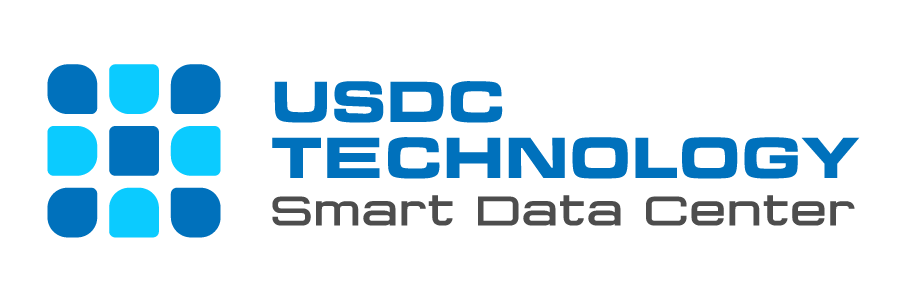In an era where data drives business strategies, choosing the right data center model can significantly impact your company’s success. Edge and hybrid data centers each offer unique benefits, and understanding their differences can help you make an informed choice that aligns with your business needs. This guide explores the strengths of both models, offering insights into when each might be the right fit for your operations.
Introduction to Edge vs. Hybrid Data Centers
The choice between edge and hybrid data centers has become increasingly complex as technology evolves. With the advent of 5G and the proliferation of IoT devices, edge computing has gained traction for its ability to process data locally, reducing delays and bandwidth usage. Meanwhile, hybrid data centers, which merge on-premises infrastructure with cloud resources, offer a flexible solution that combines security, scalability, and compliance.
This guide will demystify these technologies by exploring the benefits and limitations of each, helping you determine the best option for your business needs.
Understanding Edge Computing
Edge computing brings data processing close to the source, significantly reducing latency. This approach enables near-instantaneous analytics, making it an excellent choice for IoT applications that require real-time data handling. By processing data on-site, edge computing lightens the load on cloud infrastructure, decreasing bandwidth consumption and reducing response times.
With the deployment of 5G, edge computing is further empowered, allowing fast data transfers crucial for devices in healthcare, manufacturing, and finance. For businesses requiring immediate data processing, edge computing can enhance efficiency, especially for AI-driven applications that rely on real-time analytics.
Hybrid Data Centers – A Balanced Approach
A hybrid data center combines on-premises and cloud infrastructure, allowing businesses to harness the power of public cloud resources while retaining critical data in a secure, private environment. This model offers flexibility, enabling enterprises to adapt their data management strategies as business needs change.
Hybrid data centers are particularly beneficial for companies handling sensitive information, as they can store critical data on-premises while leveraging cloud resources for less sensitive applications. This setup provides scalability and disaster recovery capabilities, allowing businesses to manage spikes in demand and maintain continuity during unexpected disruptions.
Key Differences Between Edge and Hybrid Data Centers
Location of Data Processing:
- Edge Data Centers: Process data at the source, ideal for applications requiring immediate analytics, such as IoT devices.
- Hybrid Data Centers: Distribute data processing across on-premises and cloud environments, providing flexibility and resource allocation as needed.
Scalability:
- Edge: Designed for real-time, local processing, which may limit scalability.
- Hybrid: Highly scalable, with the ability to draw on public cloud resources during peak demand.
Security:
- Edge: Local data processing reduces exposure to network vulnerabilities but may introduce security risks due to the distributed nature of IoT devices.
- Hybrid: Provides a secure, regulated environment for sensitive data, with cloud backup for enhanced resilience.
Latency:
- Edge: Minimizes latency by processing data near its generation point, ideal for applications requiring quick response times.
- Hybrid: Latency depends on the network but offers more flexibility for data that doesn’t require immediate processing.
Benefits of Edge Computing
Edge computing’s localized processing reduces latency, making it ideal for time-sensitive applications like IoT devices and AI-driven analytics. It enhances reliability by keeping data processing close to its source, which is critical when internet connectivity is disrupted. For businesses relying on real-time insights—such as those in healthcare, manufacturing, and retail—edge computing offers a streamlined solution for immediate decision-making and operational efficiency.
Advantages of Hybrid Data Centers
Hybrid data centers combine the security of private infrastructure with the scalability of cloud resources. This dual approach enables businesses to keep sensitive data on-premises while benefiting from the cloud’s flexibility for less critical applications. Hybrid data centers also provide robust disaster recovery and backup solutions, ensuring operational resilience and continuity. This adaptability makes hybrid models well-suited for industries with regulatory compliance needs or fluctuating workloads.
Security Considerations
Edge Computing: Since edge devices operate independently, they are prone to cyber risks, especially in IoT networks. Keeping sensitive data within localized control reduces transmission vulnerabilities, but security challenges can arise from managing a large number of devices spread across multiple locations.
Hybrid Data Centers: Hybrid environments require comprehensive security frameworks that adapt to network configurations while centralizing security oversight. With a consolidated management platform, businesses can maintain secure, compliant data environments across both cloud and on-premises infrastructure.
Use Cases for Edge and Hybrid Data Centers
Edge Computing:
- Healthcare: Enables real-time monitoring of patients with local data analysis to enhance confidentiality.
- Manufacturing: Facilitates predictive maintenance through immediate tracking of machine conditions.
- Retail: Improves customer service and operational efficiency with on-site analytics.
Hybrid Data Centers:
- Finance: Allows firms to securely manage sensitive data while utilizing cloud resources for less critical functions.
- Energy: Supports scalable smart grid technologies, monitoring consumption patterns to optimize energy distribution.
Future Trends
The future of data centers lies in the integration of AI and machine learning to improve automation and predictive maintenance. Serverless architectures and software-defined networking (SDN) will enable businesses to manage hybrid and multi-cloud environments efficiently, optimizing data center performance. These advancements promise enhanced flexibility, allowing businesses to handle complex data management needs with agility.
Conclusion
Deciding between edge and hybrid data centers depends on your company’s specific needs. Edge computing is ideal for businesses needing immediate data processing with minimal latency, whereas hybrid data centers offer a versatile, scalable solution that balances security with cloud benefits. By understanding the strengths and challenges of each, you can make an informed decision that aligns with your business goals and technology requirements.
Media Contact
Universal Smart Data Center Technology
Phone: (+84) 28 73080708
Email: info@usdc.vn


